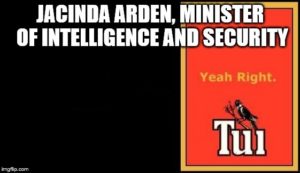One notable aspect of contemporary US politics is the re-emergence of so-called culture wars. Orchestrated by Steve Bannon, assorted alt-Right platforms and Murdoch media outlets in response to what could be called the de-WASP (White Anglo Saxon Protestant)-ification of US society, the conflict is centered on symbols and messaging. The regression into appeals to tradition, “culture†and “values†(read: white privilege) is a modern version backlash against what author and sociologist W.E.B. Du Bois (1868-1963) called “good Negro government†after the Reconstruction Era in US history (1863-1877). The theme that today’s culture wars hark to the backlash against “good Negro government† has been picked up by the writer Ta Nehisi Coates in his latest book “We Were Eight Years in Power,†where he argues that Trump’s electoral victory in 2016 was in large part due to white voters fears that Barack Obama had conclusively proved that people of color could run the federal government competently and that whites could no longer claim that colored people were ill-suited, emotionally, tempermentally, intellectually and culturally, to govern. It is one thing to have “good†Negros portrayed as equals on TV shows. It is quite another for them to actually wield power over whites.
Du Bois outlined his thoughts on “good Negro government” by watching the sequels to post Civil War reconstruction in the South, in South Carolina in particular. After the civil war US authorities mandated a period of social reconstruction in the defeated Confederacy in which free slaves were, by federal mandate, integrated into municipal and state governments and other social institutions. This forced intervention was designed to lay the foundations of a more egalitarian Southern society, and in many instances free Negros took up managerial positions in a variety of public and private agencies. However, after Reconstruction and federal government intervention ended (along with the withdrawal of federal troops), Southern states set about undoing the social changes that it had wrought. In 1895 South Carolina held a state constitutional convention in which most of the gains made by blacks were reversed and they were legally reduced to second class citizens prohibited from holding political offices and purged from public and private bureaucracies. This was also the time when the Klu Klux Klan was founded (as an extrajudicial enforcement arm of the socially revanchist South), the period of building monuments to heroes of the Confederacy was begun and the foundations of Jim Crow were laid.
For Du Bois, this backlash demonstrated that what White Southerners feared most was not a “bad Negro government†rife with incompetence and corruption, something that was already evident in pre-war Southern white governments. Instead, the greatest fear of Southern whites was of “good Negro government†that did the things that only whites were purportedly capable of doing due to their supposedly superior attributes. To that was added the battlefield record of black Union troops, who Southerners thought would be cowards and run from battle but who instead proved to be very competent soldiers, and the fact that instead of rioting, raping and pillaging once they were freed, former slaves went about peacefully rebuilding the South without major problems of their own (in fact, the majority of violence during the Reconstruction was white-on-black as white Southerners resisted treating recently freed slaves as equals).
This combination of factors destroyed the myth of white supremacy that Southerners clung to, so legislative reforms such as the 1895 South Carolina constitution were enacted in order to restore and enshrine the “proper†racial hierarchy under slave-free conditions. In effect, although unable to return to slavery, post-reconstruction legal reforms that restricted the citizenship and human rights of free slaves amounted to an early American version of apartheid, the origins of which were rooted in the fear of usurpation of white privilege.
Coates sees the Trump phenomenon as a repetition of the fear of “good Negro government.†The election of Barack Obama and the success of his administration in the face of disloyal opposition by Congressional Republicans and the Right-wing media was a nightmare for white (mostly working-class male) social revanchists who had been forced to suppress their racism and bigotry since the 1960s, when the Civil Right Act (1964), opposition to the Vietnam War and the adoption of anti-status quo and “countercultural†lifestyles upended traditional hierarchies. In the ensuing 40 years the white wage labouring classes have seen their social status eroded along with their jobs vis a vis competitors, most of them people of colour, emanating from home as well as abroad.
Objective explanations for white working class decline offer no relief to those suffering within it. It is bad enough for them to have to compete on US wages with undocumented immigrants and foreign wage slaves. It is particularly bad for them to have to compete with robotics and other aspects of computer generated productive automation. They have to find explanation for their plight in something other than the inevitable progression of US capitalism in a globalised system of production, communication and exchange. For the white demographic in decline, the answer to their plight lies in no fault of their own under conditions of capitalist competition, but in the social changes occuring corollary to it. That is, the explanation for white decline has to be socio-cultural rather than structurally capitalist in nature, specifically seen in the decline of WASP “values” and emergence of non-WASP perspectives as dominant influences in contemporary US society.
In that light the election of Barack Obama to the presidency and his subsequent success at mastering the art of governance compounded white social revanchist fears by promoting and celebrating Hispanics, Asians, gays and other minorities in leadership roles in government, business, academia and communities, and by openly embracing minority cultures as part of the mainstream of US society.
Steve Bannon has seized on this to lead the cultural charge in support of “tradition†and against “unAmerican†values, which are now open code words for a return to white supremacy. He and his political acolytes have been successful in orchestrating a pushback that has prompted a regression in US social development, with a white backlash against the gains made by minorities of all persuasions now growing stronger than in the previous three decades. The cultural wars are between an ascendant multicultural, multi-ethnic, poly-religious yet increasingly secular, pro-choice, pro-gun control, pacifist, sexually diverse and egalitarian-minded, “keep your hands off unless invited,” post-modern demographic with a rationalist and normatively relative global perspective, on the one hand, and a monocultural, white dominant, Judeo (but mostly) Christian, heterosexist, patriarchical, sexually aggressive hands -on, pro-gun, militarist, anti-choice, anti-science, industrial, xenophobic, normatively absolutist and economically insular demographic on the other. For the moment, the struggle is even but the numbers do not lie: given current and projected birth rates, the Bannon target demographic is in decline.
The last time there was a cultural clash in the US anywhere similar in scope was in the mid-60s. Until the early 60s the US was run in the image that Bannon and Trump supporters now hark back to: Dad at a good paying manufacturing job that allowed him to own his own home, Mom happily tending to the domestic front, both regularly attending a Christian church with 2.2 kids and a car in every garage (or, for those who may remember such things, basically operating as Ozzie and Harriet of 1950s TV fame).
But the 1964 Civil Rights Act, opposition to the Vietnam war and counter-cultural lifestyles pushed by rock music broke the consensus on the national myth and prompted a major ideological struggle. In that instance, progressive forces won over the rednecks and defenders of tradition. Now the struggle is being repeated but is sparked, as it were, from the other side–conservative whites are pushing back against the progressive secularization and egalitarianism of US society, as exemplified by Barack Obama and his good Negro government. The champion of these social revanchists is Trump, but it is Bannon who is the puppeteer.
There is a popular saying in the US these days: “Stay in your lane.†It is taken from car culture and references highway traffic dynamics. But it has a subtext of implicit or threatened road rage and it is in fact a substitute for “know your place.â€Â “Stay in your lane†is now used widely to address stroppy females, uppity Negros, recalcitrant children, surly teens, overly camp gays or butchy lesbians–basically any minority individual or community that dares to challenge WASP conventional wisdom about social hierarchy. For Steve Bannon, who has been doing the rounds of talk shows and conservative conventions this past week, it is all about getting the usurpers of white privilege to either get back into their traditionally prescribed roles or return to hiding.
Bannon believes that his 20-25 percent of the electoral base is homogenous, scared and united through social and corporate media. It is a short term vision, but given the uncertain shadow of the future it is possible that short term political gains based on a socially revanchist ideology could seep into the broader electoral fabric. Whatever their antipathy towards Trump aand the GOP, his opponents are heterogeneous, hopeful and yet fractious and divided. The erosion of horizontal solidarities in an age of ideological individualism is abetted and pushed by adavances in telecommunications technology–the same technology that social revanchists use so effectively. Bannon has already invited Democrats to continue to play the identity politics game (and there is a lesson for New Zealand here), because that allows him to successfully impose the weight of his demographic against those aligned against it. The Bernie Sanders/versus Hillary Clinton campaigns show one end of the “liberal” internecine division in the US; the feminist arguments about the #metoo hashtag show another. There are many more sources of liberal/progressive cleavage, and in Bannon’s eyes they spell “Achilles Heel.”
The success of the cultural wars pushback is concerning. The Right-wing (including alt-Right) media, both corporate and social, have very much influenced the discourse with their attacks on the Obama legacy (him being “weak†in foreign affairs etc.) and in their support for Trump’s demeanour and his dismantling of that legacy via Executive Orders. The impact is real. Things that one would have thought were done and dusted years ago–arguments about gender differences as they apply to employment and wages, racial differences as they apply to law and order, whether being native born as opposed to foreign born should be a criterion for security clearances, are homosexuals trustworthy with kids, what constitutes patriotism, etc.–are now back in the public domain in a measure not seen in decades.
All of which is to say that things in the US are pretty tetchy at the moment, and the possibility of physical conflict between those who embrace “good Negro government†and those who fear it are quite real.
Let us not think that this is exclusively a US problem. Be it in the “I told you so†comments of white South Africans or Zimbabweans about the bad Negro governments that followed the abolition of white supremacy in those countries, or in the similar comments about poor governance of black-ruled cities like Detroit or the District of Columbia in the US, or those who point to problems with aboriginal self-governance in the Northern Territory, there are many who find comfort in black failure and find threats in black success. That is true for some quarters in Aotearoa, where the possibility of “good Maori government†or “good Pasifika government†is dismissed out of hand not so much because of their outright impossibility due to some instrinsic traits of those involved, but because of Pakeha fear that they could do no worse, and perhaps even better than Pakeha dominated government.
Let’s remember this if there is pushback against the notion of “good Negro government†in New Zealand.

 Buchanan family Thanksgiving table in The Barn, Holliston, MA.. Photo courtesy Kathy LaCroix Buchanan
Buchanan family Thanksgiving table in The Barn, Holliston, MA.. Photo courtesy Kathy LaCroix Buchanan

